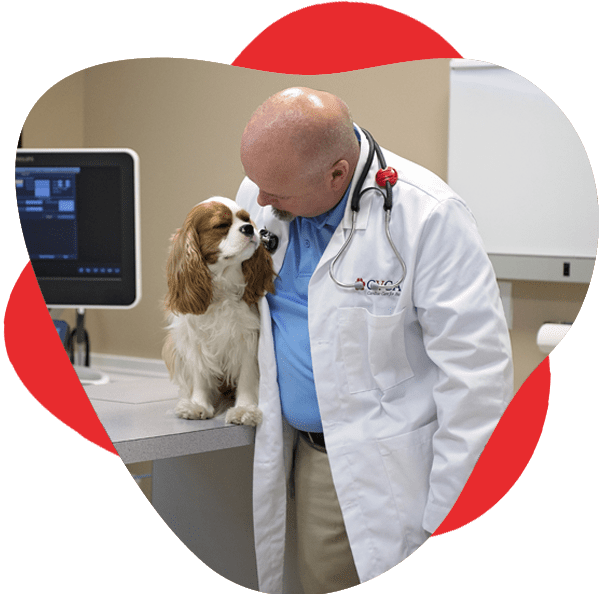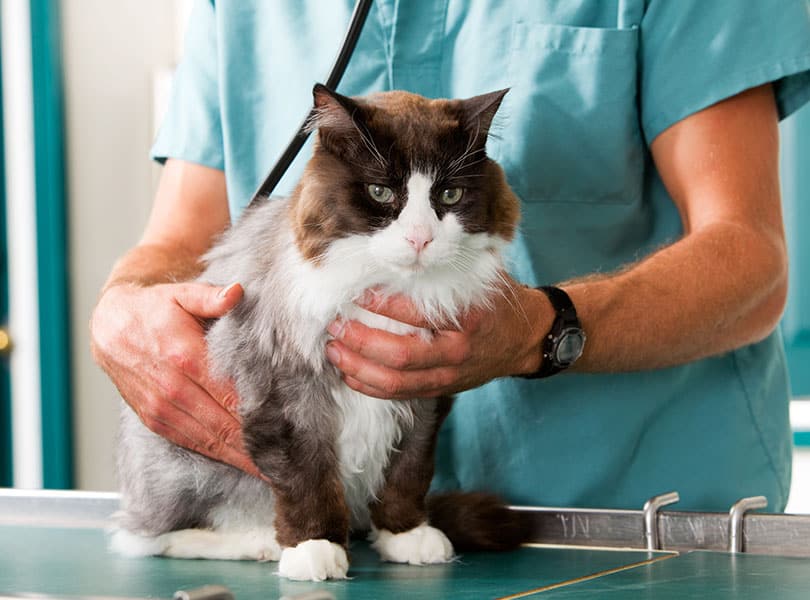The Function of Ultrasound and CT Check in Modern Veterinary Practices: Insights From Experienced Professionals
In modern vet methods, ultrasound and CT scans greatly enhance analysis abilities. These imaging strategies give critical understandings into animal health and wellness, directing therapy decisions. Experienced professionals recognize the one-of-a-kind benefits of each method. Ultrasound offers real-time analyses, while CT checks deliver complex anatomical details. Recognizing their functions and applications raises vital concerns about their influence on person outcomes and the future of vet diagnostics. What insights can be gotten from their integrated usage?
Recognizing Ultrasound in Veterinary Medication
Ultrasound is a vital analysis tool in veterinary medication, offering a non-invasive approach to envision inner frameworks. This imaging strategy utilizes high-frequency acoustic waves to produce real-time photos of cells and body organs, allowing veterinarians to assess conditions without surgical treatment. Usual applications consist of assessing the heart, liver, kidneys, and reproductive organs, as well as keeping track of pregnancies.The treatment is reasonably fast and can be performed in numerous settings, making it an accessible option for vets. Unlike radiography, ultrasound supplies comprehensive details regarding soft cells and blood flow, which is vital for exact diagnoses.Veterinary professionals count on ultrasound to identify irregularities such as lumps, cysts, and fluid accumulation. Its capability to direct biopsies and other procedures better enhances its utility in scientific technique. By supplying a safe and efficient method to take a look at internal makeup, ultrasound has come to be a foundation of modern veterinary diagnostics.
The Benefits of CT Scans for Animal Diagnostics
CT scans offer considerable advantages in veterinary diagnostics by offering improved precision in determining interior problems (Ultrasound For Dogs). As a non-invasive imaging technique, they assure the safety and convenience of pets during exams. On top of that, CT checks facilitate a complete assessment of interior frameworks, allowing for a lot more reliable therapy preparation
Enhanced Analysis Accuracy
Innovations in imaging innovation have significantly enhanced diagnostic accuracy in veterinary medication, specifically through making use of CT scans. These scans give thorough cross-sectional pictures of a pet's interior structures, allowing veterinarians to recognize irregularities with accuracy. The high resolution and three-dimensional capacities of CT imaging help with the detection of problems such as lumps, cracks, and inner blood loss that could be missed with standard imaging approaches. In addition, CT scans can assist in pre-surgical planning by supplying an extensive view of physiological partnerships. This degree of information not just boosts the precision of diagnoses however additionally help in tailoring reliable treatment plans. The assimilation of CT technology right into vet methods is transforming the landscape of pet health care, enhancing results for people.
Non-Invasive Imaging Strategy
The intro of non-invasive imaging techniques has actually reinvented animal diagnostics, with CT scans emerging as a prominent device in vet methods. These scans provide high-resolution, cross-sectional pictures of an animal's interior frameworks, enabling vets to examine complicated problems without the need for intrusive treatments. The benefits of CT scans include their capability to spot tumors, cracks, and interior blood loss with impressive precision. Furthermore, they assist in the assessment of soft cells and organs, boosting diagnostic capacities. The speed of CT scanning allows fast decision-making, which is crucial in emergency scenarios. By minimizing anxiety and discomfort for the animal, CT scans add to a more gentle strategy to diagnostics, inevitably boosting treatment end results and progressing veterinary treatment.
Comprehensive Internal Evaluation
A comprehensive inner assessment is essential for precise medical diagnosis and effective therapy in vet medicine. CT scans offer considerable benefits in this respect, offering comprehensive cross-sectional pictures of a pet's interior frameworks. This sophisticated imaging technique boosts visualization of complex anatomical regions, making it possible for veterinarians to identify irregularities such as lumps, cracks, and inner blood loss with higher precision. On top of that, CT checks facilitate the assessment of conditions that may be challenging to identify via traditional methods. The speed and accuracy of CT imaging likewise contribute to timely treatments, enhancing person end results. As vet methods increasingly incorporate CT technology, the advantages of considerable interior evaluations end up being noticeable, enhancing the importance of this device in modern veterinary diagnostics.
Comparing Ultrasound and CT Imaging Techniques
While both ultrasound and CT imaging offer necessary functions in vet diagnostics, each strategy uses unique advantages and constraints that can affect professional decision-making. Ultrasound is specifically valued for its real-time imaging abilities, permitting vets to observe vibrant physiological procedures. This strategy is non-invasive, mobile, and does not entail ionizing radiation, making it a much safer choice for both animals and clinicians. Nonetheless, ultrasound might have restrictions in visualizing particular physiological structures or deep tissues.Conversely, CT imaging gives comprehensive cross-sectional views of the body, enabling specific localization of irregularities. It masters assessing facility body organs and structures, specifically in the thorax and abdomen. Nonetheless, CT scans need sedation or anesthesia oftentimes and entail direct exposure to ionizing radiation. Eventually, the selection between ultrasound and CT relies on the certain clinical situation, the location of passion, and the urgency of the diagnostic needs.
Situation Researches: Successful Diagnoses With Imaging
Case research studies highlight the substantial improvements in analysis precision achieved with innovative imaging modern technologies like ultrasound and CT scans in veterinary techniques. These developments not only improve the discovery of different conditions however likewise promote effective and prompt therapy strategies. Assessing specific situations can highlight the transformative impact of these imaging methods on veterinary medication.
Analysis Accuracy Improvements

Imaging Innovation Advancements
As veterinary imaging technology proceeds to evolve, its impact on diagnostic capabilities becomes increasingly apparent. Current instance research studies highlight the successful application of innovative ultrasound and CT check methods in determining intricate problems. For circumstances, a vet clinic used high-resolution CT scans to identify an unusual type of lung cancer in a pet, which standard imaging had missed out on. Likewise, an ultrasound assessment disclosed a stomach mass in a feline, prompting prompt medical intervention and a favorable end result. These advancements not just improve diagnostic precision however additionally make it possible for veterinarians to devise targeted therapy plans. By leveraging advanced imaging technologies, vet professionals are considerably boosting individual care, leading to extra efficient administration of numerous wellness conditions in animals.
The Function of Imaging in Emergency Veterinary Treatment
Imaging plays a vital role in emergency situation veterinary care, giving veterinarians with vital information required to make rapid, educated choices. In urgent scenarios, methods like ultrasound and CT scans make it possible for professionals to rapidly assess a family pet's internal structures, determining crucial problems such as inner bleeding, cracks, or organ irregularities. These imaging modalities enable real-time analyses, facilitating timely treatments that can be life-saving. Ultrasound is invaluable for assessing soft tissue injuries and problems like liquid build-up, while CT checks deal thorough images of complex anatomical structures, important for identifying injury instances. The rate and accuracy of these imaging methods boost the vet's capacity to devise effective treatment plans, making sure the most effective possible outcomes for their clients. Subsequently, the assimilation of advanced imaging technologies right into emergency situation veterinary practices is not just useful however progressively needed, as it enhances diagnostic capabilities and improves general pet treatment during defining moments.
Training and Expertise in Vet Imaging
Sophisticated imaging strategies such as ultrasound and CT scans are vital for reliable vet treatment, the effective application of these technologies heavily depends on the training and expertise of veterinary professionals. Skilled use imaging tools needs extensive expertise of anatomy, pathology, and the concepts underlying each method. Vet professionals should go through customized training to properly her explanation interpret imaging results, which is important for identifying problems and intending treatment.Certifications and continuing education in veterinary imaging enhance the abilities of practitioners, enabling them to stay upgraded with technical advancements. Collaboration between veterinarians and radiologists commonly brings about boosted analysis precision, as professionals can provide insights right into intricate instances. On top of that, practical experience in handling imaging tools fosters confidence in its application. Ultimately, the quality of veterinary imaging services is straight correlated to the level of training and know-how possessed by the experts utilizing these vital diagnostic tools.
Future Trends in Diagnostic Imaging for Animals
With the fast developments in innovation, veterinary analysis imaging is positioned for significant evolution in the coming years. Arising patterns indicate a change in the direction of more portable and accessible imaging techniques, such as handheld ultrasound tools, which might enhance area diagnostics. In addition, the combination of expert system is expected to revolutionize photo evaluation, enabling quicker and extra precise interpretations of results.Moreover, developments in 3D imaging techniques and computed tomography will certainly give vets with even more extensive views of pet composition, resulting in better treatment strategies. Online fact innovation might likewise contribute in surgical preparation and education, offering veterinarians an one-of-a-kind point of view on intricate cases.As telemedicine continues to expand, remote assessments facilitated by diagnostic imaging will certainly become a lot more common, permitting specialists to help family doctors in real-time. On the whole, these trends are established to boost the efficiency and efficiency of vet care, eventually boosting animal results.
Regularly Asked Questions
Exactly How Much Do Ultrasound and CT Checks Price in Vet Clinics?
The expenses of ultrasound and CT scans in vet facilities generally range from $300 to $1,500, relying on factors such as location, center type, and details treatments required for the animal's diagnosis and therapy.

Are There Any Threats Related To Ultrasound and CT Scans for Pets?
Ultrasound and CT scans usually present minimal threats to family pets. Possible worries include sedation reactions and exposure to anesthetics. Veterinarians carefully analyze each case to minimize any threats associated with these analysis treatments
The Length Of Time Do Ultrasound and CT Procedures Usually Take?
Ultrasound treatments typically take around half an hour to an hour, depending upon the intricacy. CT scans, being more in-depth, usually need 30 mins to 90 minutes, consisting of prep work and recovery time for the family pet.
Can All Veterinarians Perform Ultrasounds and CT Scans?
Not all vets can discover this info here perform ultrasounds and CT scans. Specialized training and accreditation are often needed to assure expertise in these advanced imaging methods, which might limit their accessibility to vets with additional certifications and sources.
What Kinds Of Pets Benefit Many From These Imaging Techniques?
Specific pet varieties, specifically felines and canines, advantage considerably from ultrasound and CT scans. These imaging techniques enhance diagnostic precision for conditions like tumors, interior injuries, and body organ problems, leading to improved treatment results and individual treatment. The high resolution and three-dimensional abilities of CT imaging assist in the discovery of problems such as growths, fractures, and interior bleeding that might be missed out on with standard imaging approaches. Instance researches illustrate the significant improvements in analysis precision attained with sophisticated imaging innovations like ultrasound and CT scans in veterinary practices. Improving diagnostic precision in vet methods has been substantially aided by developments in Get the facts imaging innovations such as ultrasound and CT scans. Advanced imaging techniques such as ultrasound and CT scans are essential for reliable vet care, the effective execution of these innovations heavily depends on the training and competence of veterinary specialists. Vet professionals must undertake specific training to accurately analyze imaging outcomes, which is important for detecting problems and planning treatment.Certifications and proceeding education in vet imaging improve the abilities of experts, allowing them to stay updated with technological improvements.